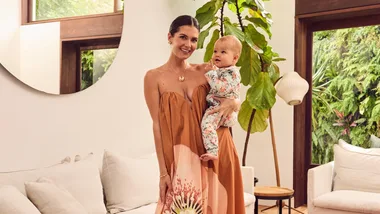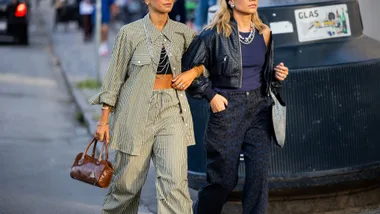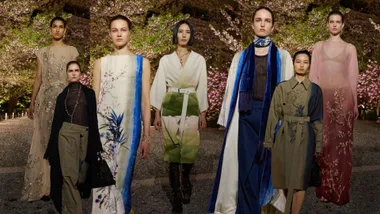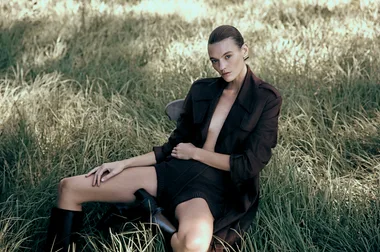When it comes to styling A-listers during awards season, there are a whole new set of rules, meet the stylists who are shaking up the fashion scene with their dedication to bigger causes.
Jason Bolden
The Power Dresser

In 2011, Gabrielle Union needed a dress for a swanky Art Basel event. So she called her friend Jason Bolden, then the owner of a popular New York vintage store. He rifled through the racks and instinctively selected an archival Lanvin gown in a geometric pattern. “I did a favour for a dear friend and days later the phone rang, and I literally have not stopped working since,” Bolden recalls. “I didn’t know that dressing her for an event was going to snowball my career. It was all kind of a perfect mistake.”
Today, Bolden’s client list is a who’s who of black Hollywood: Union is still on his roster, as are Serena Williams, Alicia Keys, Yara Shahidi, Cynthia Erivo, Taraji P Henson and transgender actor Janet Mock. Bolden, whose process has recently been the focus of a glossy Netflix docu-series Styling Hollywood, could no sooner choose a favourite client than a parent could a favourite child. “They all bring something so different,” Bolden enthuses. “I’m blessed that I get to enjoy and take up space in their lives.”
He sums up his role as less stylist, more motivational coach. “People think that you get a dress and zip it up and it’s beautiful, and that’s not the case,” he says. “For me, it’s like, ‘How do you feel? Do you want to wear your own jewellery? Do you want to wear this really, really uncomfortable shoe?’” Often, they don’t – remember Williams completed this outfit from the 2019 Met Gala (pictured above) with Nike sneakers?
What Bolden gives his clients is the strength and self-possession to face a wall of photographers, and he makes a point of doing so for women of all shapes and backgrounds, like director Ava DuVernay. “I’m a director, not an actress. Not a size zero. I like to stay covered,” the filmmaker has said. “Stylists weren’t inspired. Until Jason Bolden.”
“When people think it’s difficult [to style women who aren’t sample size], I think you’re just being lazy. Anyone can dress someone who looks like a supermodel,” Bolden explains. “To me, that’s not talent.” For him, it’s about giving each of his clients the same feeling of power and confidence when they step out at an event. “I make sure that each look enhances all the things they love about themselves,” he says. “I hope they feel exactly how they feel at the fitting, when we’re laughing, we’re giving each other high fives. I want them to say, ‘Oh my God, Jason, this is so amazing. I feel awesome.’”
Jill and Jordan
The Activists
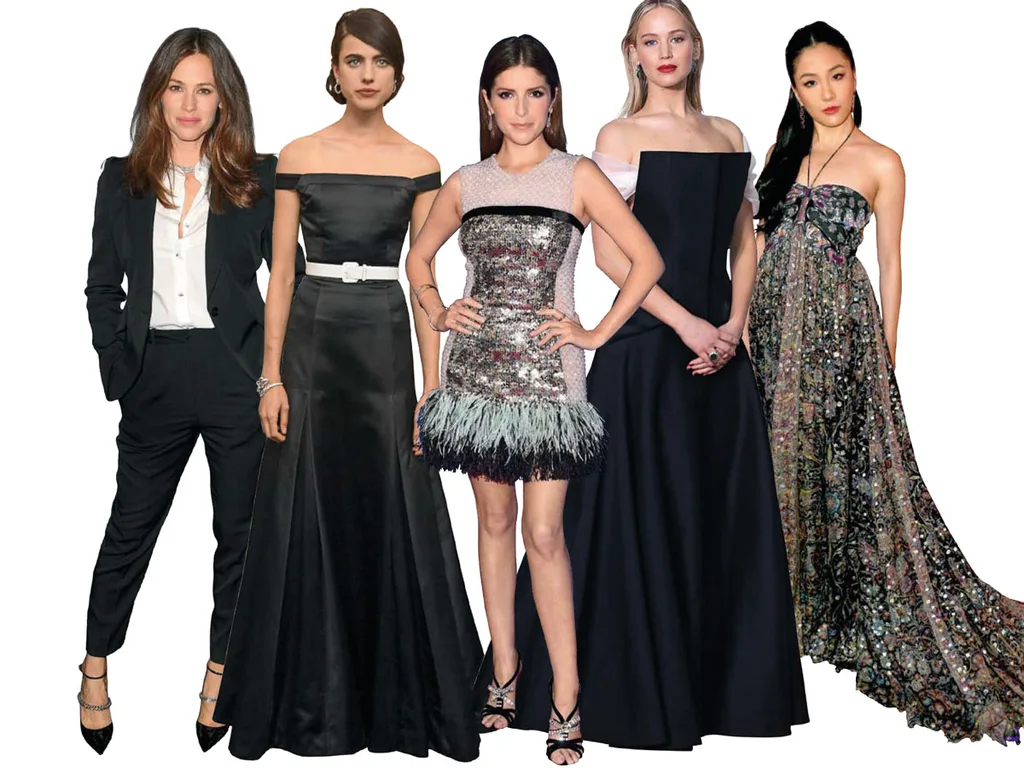
When Jill Lincoln and Jordan Johnson first started working together as celebrity stylists 10 years ago, the red carpet was a completely different, well-shod beast. Back then, it was a cacophony of consumerism, an embarrassment of gowns, jewels and the dreaded ‘Mani Cam’. “It [was] the same old dog and pony show,” Lincoln says. “At this point, all the players in the game are like, alright, been there done that. Now let’s actually use this platform for something other than selling clothes, and the myth that [celebrities] just roll out of bed looking like that, because they don’t,” she laughs.
It’s why the duo were inspired to launch Red Carpet Gives, an initiative that encourages the major players in awards season, like designers, agents and publicists, to make donations to charities instead of sending gifts or flowers to stylists and stars in the aftermath of big events. “Every year we see tremendous amounts of waste,” Lincoln says. “We are constantly spoilt. So we thought this was a way to re-distribute to something far greater than ourselves.”
The pair did a trial run of the initiative at the 2019 Oscars with their clients Rachel Brosnahan and Diego Luna, before launching in earnest at the Emmys with Margaret Qualley (the breakout star of Once Upon a Time in Hollywood, above far left). All proceeds went to Save The Children, with funds directed to families stranded during the US Border Crisis. “Everyone was on board,” Johnson says. Adds Lincoln: “We just hope this becomes the norm in the industry.” Red Carpet Gives will continue through the 2020 awards season, with new charities aligned to each different event.
Thanks to a client roster that includes the Jennifers (Lawrence and Garner), as well as Constance Wu and Anna Kendrick, Lincoln and Johnson are old hands at the logistical nightmare that is awards season, squeezing in their activism among the everyday grind. “There might be a million different conversations, months in advance, with trips across the globe and fittings with amazing seamstresses who work through the holidays hand-beading a dress,” says Lincoln of the toil behind each spectacular custom look. “The work never stops!”
Tara Swennen
The Eco-Warrior
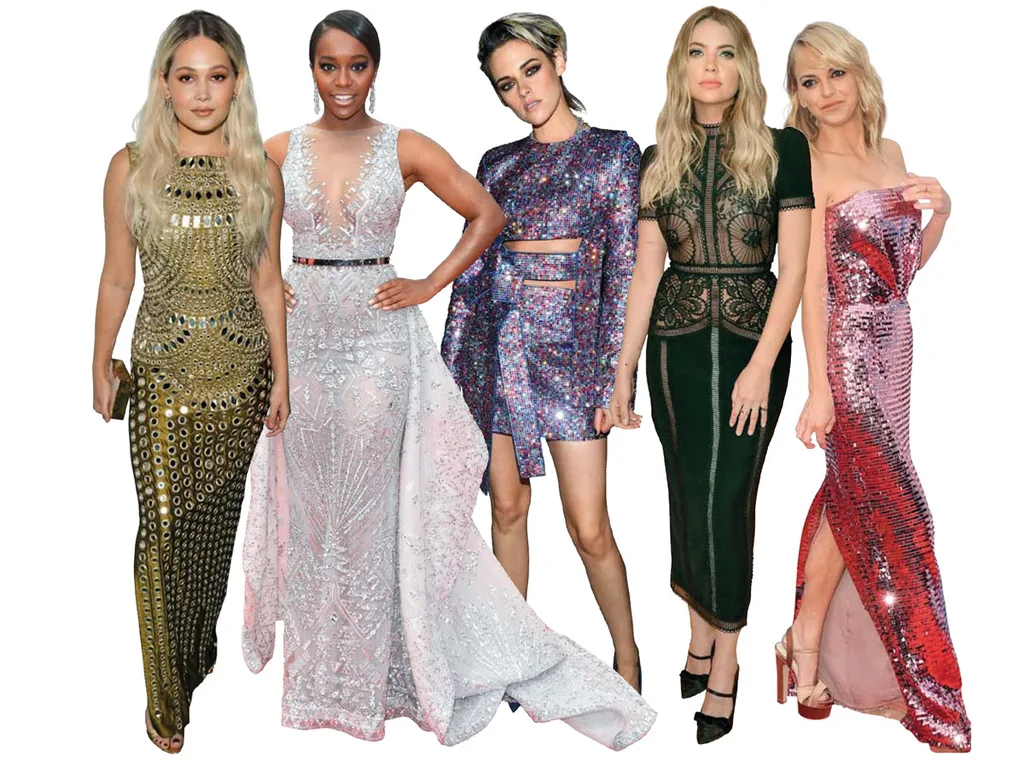
At the world premiere of Charlie’s Angels in November, Kristen Stewart was, quite literally, dazzling. Clad in a minidress by Swiss designer Kevin Germanier festooned with thousands of upcycled Swarovski crystals, the actress sparkled like a Christmas tree. Aside from being party perfect, the look also spoke to fashion’s current mood for sustainable, ethically produced pieces. And that’s thanks to her longtime stylist Tara Swennen, who was recently named Best Vegan Fashion Stylist at Los Angeles Vegan Fashion Week.
Swennen describes her relationship with her clients (including Anna Faris, Ashley Benson and Allison Janney) as “steering” them towards sustainable choices. “Celebrities have realised they can use their voice in a different way on the red carpet,” she says, though it’s not as simple as it appears. “You have to coordinate what’s happening in the world with the needs and wants of your clients.”
The stylist keeps the balance right by making sure that she always has a few options from eco-friendly and cruelty-free brands, such as Stella McCartney or vegan footwear label T.U.K., which Stewart wore on Saturday Night Live. She also won’t work with exotic skins anymore and uses as little leather as possible. “I work with women who are very intelligent,” she says, “and they are very aware of my stance. I think they all appreciate what I do.”
Styling, Swennen says, is a “very gruelling job” that seems like one glamorous shopping spree when, in fact, it’s “a lot of boxing and shipping and, you know, hanging things”. Oh, and drama. “There’s always a funny story,” she says, laughing. “I’ve had last-minute outfit changes. I’ve had zippers breaking on me. I’ve had to sew someone into their gown half a dozen times in my career.”
For her, though, the best memories are those magical moments when her twin passions comes together: style and sustainability. “I’ve always loved making women feel beautiful and confident,” Swennen says. “But for me now, this extra purpose has really changed the game.”
Sam Ratelle
The Gender Bender

Every time Billy Porter steps out at an event, the stage is set for an evening of sartorial theatre, one that wants you to dispel rigid archetypes of what men can and can’t wear on the red carpet.
Take the Pose star’s billowing fuchsia-lined Randi Rahm cape at the 2019 Golden Globes for example, or that break-the-internet Christian Siriano velvet ball gown – with matching tails and bow tie – at the 2019 Oscars .
But such elaborate statements are occasionally accompanied by near misses. If Porter is the elegant swan gliding across the water, his stylist Sam Ratelle is the bird’s legs furiously kicking underneath. “Billy never tried on the Oscars dress until the day of,” Ratelle says, laughing. “I did everything with fit models. There was a moment of, like, ‘Oh my God, I hope this shit fits. Because if it doesn’t, we’re in trouble.’” And the Golden Globes cape? Ratelle had to sneak into the event to fetch it from Porter after the red carpet; he couldn’t wear it inside the venue on account of its sheer bulk.
It’s not always like this. “We’re usually pretty together,” Ratelle admits. But the nature of his relationship with Porter – Ratelle isn’t merely stylist but creative director, working across the actor’s social media accounts and fashion publicity – means that each collaboration has to be next-level, prioritising Porter’s message that everyone, regardless of gender, should feel empowered to wear a sharply tailored tuxedo one day and a bustling dress the next. “One of the things we want to scream out loud is ‘Be yourself’,” Ratelle says. “Wear whatever you want. Because at the end of the day, it’s nobody’s business but yours.”
Ratelle, whose career began in costume design on Broadway, is unique in his ability to fuse drama and dialogue (notably at the 2019 Tony Awards, Porter wore a uterus-inspired gown to support women’s rights). “It’s entertainment,” he stresses. “It is a show. [But] the more people who see this performance, the more conversation we have.” Starting a conversation proves the power of clothes, which in turn ensures that Porter’s platform is recognised. “We get messages from countries where LGBTQ people may not have as many rights as we do,” Ratelle explains. “It really touches me. Like, ‘I aspire to be like Billy some day,’ or ‘I’ve never seen a man wear this before.’ That visibility and that representation is hugely important.”
This article originally appeared in the January issue of marie claire

